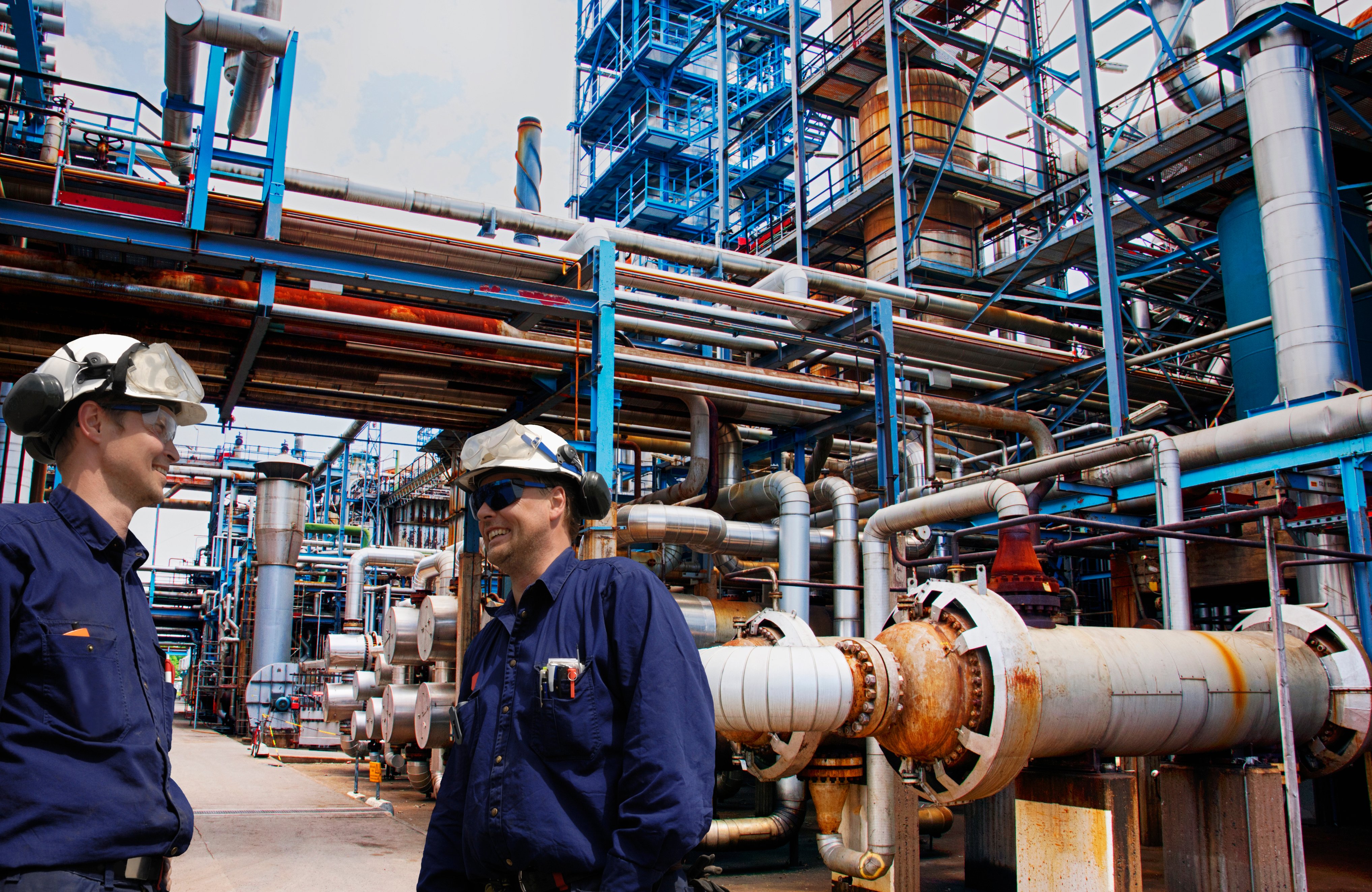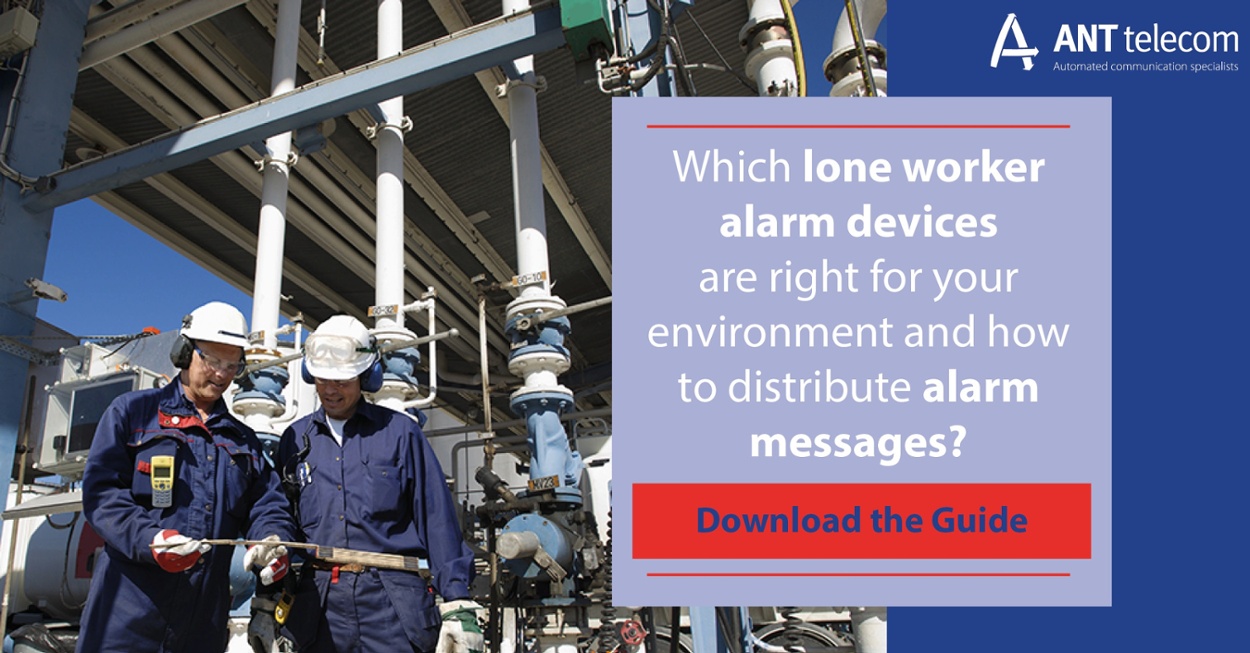
Many industrial facilities are dangerous to lone workers, but petrochemical sites are some of the most hazardous. Although overall injuries and deaths have fallen over the past few decades (due in large part to comprehensive safety legislation), there is still an ever-present risk of a serious accident occurring. Added to this, petrochemical sites tend to present their own set of challenges that make it especially difficult to quickly detect and respond to an emergency. These include the sheer size of many sites, obstructed sightlines caused by buildings and large equipment, coupled with loud noises that can drown out alarms or calls for help. On top of this, complex machinery can present its own hazards whilst simultaneously demanding heavy concentration from workers at all times, lessening their ability to notice or respond to safety problems. Even control room staff may be distracted by pressing issues, with their workload sometimes causing alarms to be miscategorised or even forgotten.
Petrochemical facilities are an example of an ATEX sites, meaning that they fall under EU legislation governing how the materials stored and processed there are used. Under ATEX regulations, most chemical or petroleum plants would be classified as a ‘Zone 0 and Zone 1’ hazard, meaning that they have a high risk of ignition due to the presence of flammable vapour in the air. As such, equipment used in such areas should be certified by ATEX in order to avoid the risk of causing a serious accident. This rules out the ability for workers to protect themselves by using common off-the-shelf communications devices. However, by adopting modern methods of enabling workers to communicate, we can move some way towards guaranteeing the safe handling of chemicals in the workplace and keeping unnecessary accidents to a minimum. Additionally, there are some general steps that can be taken in order to review existing procedures and make sure that they are up to standard.
- Workers should always know the pertinent information about the substances they are handling, as well as have the information clearly displayed on containers themselves. This will often take the form of a simple safety label or data sheet. As well as helping to clearly denote different materials, prominent datasheets serve as a reminder to staff to make sure they are observing the proper procedures.
- All chemicals should be listed and properly tracked via a central database. This enables staff and managers to see at a glance where and when dangerous substances are being used and stored, reducing the chance of potentially reactive materials from coming into contact.
- Every hazardous chemical should be clearly identified via signage and labelling. This means that workers will not accidentally mistake one material for another or act in a hazardous manner around dangerous chemicals. Similarly, areas of the facility that contain these chemicals should be properly signposted, preventing workers from taking in equipment or other items that could pose a threat (such as unsafe communications devices being taken into a vapour-heavy area).
- Workers should be trained to quickly and accurately recognise all relevant pictograms denoting hazards. Such knowledge not only allows them to avoid potentially dangerous areas and situations, but it also arms them with the ability to react quickly and safely in the event of an emergency such as a spillage or fire.
- All substances should be properly stored before use and then safely disposed of afterwards. Following this guideline allows workers to move around the site without having to worry about encountering a discarded hazardous container at random. Furthermore, the proper disposal of used chemicals lessens the potential danger posed to people living and working in the immediate vicinity of the site, who may otherwise be effected by substances being dumped at random or stored in a manner that increases the chances of a major incident occurring.
- Another vital step is to make sure that there are clearly defined procedures for staff and responders to follow in the event of an accident. Having a safe work practices checklist in place will massively cut down on the amount of time that it takes workers to evacuate a danger zone and will allow control room staff to initiate measures to contain the spread of an emergency. These plans can be taken a step further by actively monitoring the atmosphere quality around the chemical site and making sure workers have their health regularly evaluated, thereby catching potential issues (such as toxic material leaks) before they cause serious harm.
- It is also of the utmost importance to ensure that workers have access to a robust communication system in order to relay updates about the status of petrochemicals being stored or used and also to send warnings to the control centre in the event of an emergency. It is most easily done via passive systems such as a network of cameras and sensors that can be remotely monitored, combined with manual alarm buttons. Many direct communication devices (such as phones or radios) are unable to be used in an ATEX environment. This is because many electronic communication devices carry with them an attendant risk of igniting airborne chemical vapour when they are used.
- Speedy reporting of accidents is vital in petrochemical facilities in order to contain emergencies before they threaten the safety of the entire site. However, use of prohibited communications devices in petrochemical facilities can constitute a breach of ATEX regulations and even increase the danger to employees. As such, ATEX-compliant communications methods are needed to ensure fast reporting and ensure the safety of lone workers who may not be able to depend on a traditional alarm system.
In order to strengthen worker safety, ANT provides a suite of telecommunication devices that are fully ATEX-compliant and which can mesh seamlessly with existing reporting and alarm systems at a given site. This is accomplished by altering the design of the devices to include high levels of insulation and shielding, effectively sealing out the surrounding atmosphere and preventing the device’s circuitry from igniting any flammable material in the air.
Furthermore, ANT devices come with a range of features that make them highly suited for use by lone workers. Smartphones and radios provide additional functions such as a ‘panic button’, allowing an injured employee to quickly summon help or warn others about imminent danger in their area. Once the alarm has been raised, a device can be used to quickly update senior employees with additional details, allowing them to tailor a faster and more efficient response to the problem at hand by contacting specialist staff or evacuating the area. Even if a worker is incapacitated and unable to call for help themselves, the device can still raise the alarm. This is thanks to sensors built into the phone itself that can recognise the impact from falls, odd positioning of the phone in relation to the ground or even detect if the carrier has become motionless.
Additionally, devices supplied by ANT can integrate with existing alarm systems and upgrade performance without necessitating extra staff training or the adoption of new procedures. In this manner, staff are free to continue with their normal routines whilst also having a dramatically enhanced level of safety, both for themselves and the site as a whole. For further information about ANT ATEX communication devices, go to https://www.anttelecom.co.uk/products-and-solutions/solutions/atex





